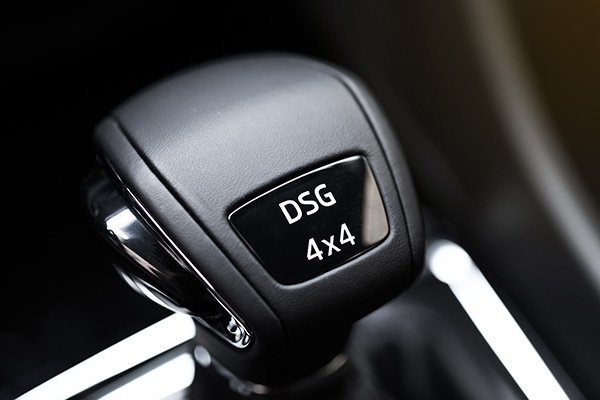
You may have heard the term "DSG transmission" thrown around, especially if you're shopping for a performance-oriented or luxury car. But what exactly is a DSG transmission, and how does it differ from the typical manual or automatic gearboxes you might be familiar with? If you're a car enthusiast or someone curious about innovative automotive technology, understanding the DSG transmission can be incredibly valuable. Whether it's about improving your car knowledge or making a more informed decision when buying your next vehicle, knowing how DSG works can enhance your driving experience and help you appreciate this impressive piece of engineering.
The DSG Transmission
DSG stands for "Direct-Shift Gearbox." At its core, it’s a type of dual-clutch transmission (DCT), but it takes things a step further with its unique design and technology. Unlike a conventional automatic or manual transmission, a DSG uses two separate clutches to handle both odd and even gears. This setup allows for quicker gear shifts without interrupting the flow of power to the wheels. Essentially, you get the efficiency of a manual transmission but with the ease and convenience of an automatic.
What makes the DSG stand out from the rest is its ability to pre-select the next gear. One clutch is always engaged while the other is prepared to take over instantly, which means the transition between gears happens in a fraction of a second. So, when you're driving, you experience a seamless shift that can be faster and more efficient than any human could achieve with a manual transmission.
How Does a DSG Transmission Work?
To fully grasp how a DSG transmission works, you need to break down the mechanics behind its operation. Imagine two clutches, one handling the odd-numbered gears (1, 3, 5, 7) and the other managing the even-numbered gears (2, 4, 6). When you're driving in, let’s say, third gear, the transmission has already engaged the fourth gear on the second clutch, ready for a rapid shift.
Here’s how the process unfolds:
Engaging a Gear
As soon as you accelerate and the transmission needs to shift, the currently engaged clutch disengages, while the second clutch, already prepped with the next gear, engages immediately. This results in an almost imperceptible shift.
Dual-Clutch Design
The dual-clutch system means there's no interruption in power. In a traditional automatic or manual transmission, there's a brief moment when the engine isn't delivering power during the shift. However, with DSG, one clutch is always delivering power, ensuring smoother and faster acceleration.
Electronically Controlled
The DSG is managed by an onboard computer, which continuously monitors your driving behavior, throttle input, and road conditions to make split-second decisions on when to shift and which gear to engage.
This innovative design allows for quicker gear changes and makes driving feel more responsive and engaging, especially when you need to accelerate quickly or enjoy a sportier driving experience.
Benefits of a DSG Transmission
One of the reasons why DSG transmissions have gained so much popularity in performance cars is because they blend the best of both worlds—offering the control of a manual gearbox with the convenience of an automatic. Here are some benefits that make DSG transmissions a favorite among drivers:
Faster Shifts
Because the system is designed to pre-select gears, it can change gears in milliseconds, making it ideal for performance driving or anyone who appreciates responsive handling.
Better Fuel Efficiency
DSG transmissions are often more efficient than traditional automatics because the seamless gear shifts help the engine run at optimal speeds. This leads to better fuel economy, especially during highway driving.
Enhanced Driving Experience
With the ability to shift quicker than a traditional manual, the DSG provides a sporty feel that can make daily driving more fun. The smooth transition between gears also makes for a more pleasant and less jerky ride.
Less Wear and Tear
Since the transmission shifts gear more efficiently than a human could in a manual transmission, there's typically less wear on the engine and transmission components over time.
Drawbacks of a DSG Transmission
While DSG transmissions offer plenty of advantages, they do come with a few potential drawbacks that are worth noting. For one, the complexity of the system means that repairs can be more expensive compared to simpler automatic or manual transmissions. Additionally, some drivers might find that the DSG’s tendency to “hunt” for gears at lower speeds can feel slightly awkward, especially in stop-and-go traffic.
Also, because DSG transmissions are highly sophisticated, they require regular maintenance to ensure longevity. This includes fluid changes and software updates, which are critical to keeping the transmission functioning properly over time.
DSG vs. Traditional Automatic and Manual Transmissions
So how does the DSG transmission stack up against traditional automatics and manuals? For many drivers, it offers a happy middle ground. A conventional automatic transmission uses a torque converter to handle shifts, which can feel sluggish compared to a DSG’s fast response. Manual transmissions, on the other hand, give the driver full control but require constant attention to gear changes, which can be tiring in city traffic.
The DSG eliminates the need for a clutch pedal and manual shifting, yet it still offers the precision and control you’d expect from a manual. The automatic mode in a DSG also provides all the convenience of an automatic gearbox, allowing you to sit back and enjoy the ride without worrying about shifting gears.
Get expert service for your DSG transmission at Transmission Hero. Whether you’re experiencing issues or just need routine maintenance, our team is ready to help keep your vehicle running. Book an appointment today, and let us take care of your car’s needs.